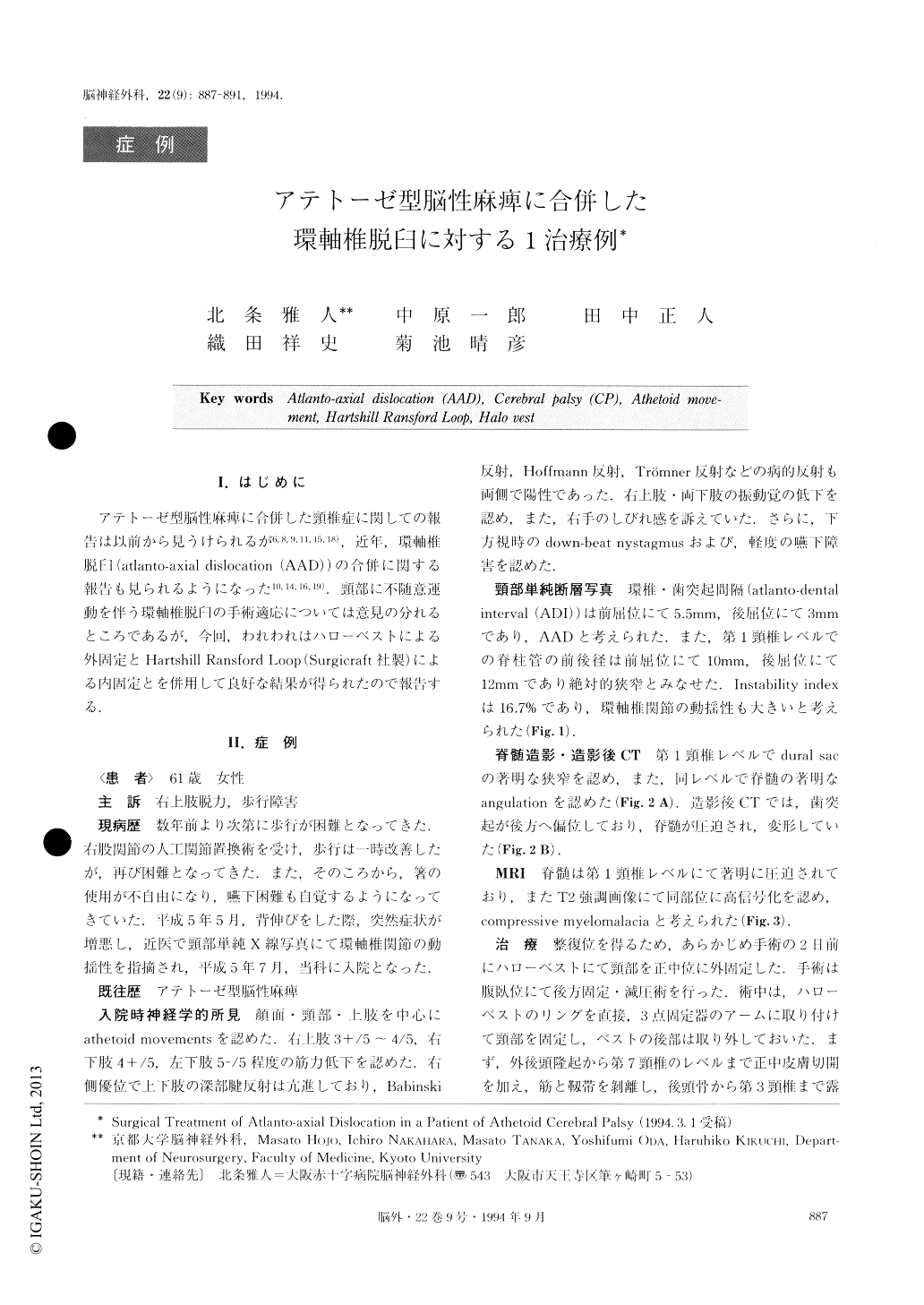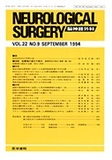Japanese
English
- 有料閲覧
- Abstract 文献概要
- 1ページ目 Look Inside
I.はじめに
アテトーゼ型脳性麻痺に合併した頸椎症に関しての報告は以前から見うけられるが6,8,9,11,15,18),近年,環軸椎脱臼(atlanto-axial dislocation(AAD))の合併に関する報告も見られるようになった10,14,16,19).頸部に不随意運動を伴う環軸椎脱臼の手術適応については意見の分れるところであるが,今回,われわれはハローベストによる外固定とHartshill Ransford Loop(Surgicraft社製)による内固定とを併用して良好な結果が得られたので報告する.
The authors report a case of successful surgical treat-ment of atlanto-axial dislocation (AAD) secondary to athetoid cerebral palsy.
A 61-year-old woman was admitted to our hospital in July 1993 complaining of progressive weakness in the right upper extremity and gait disturbance. She had been suffering from athetoid movements of her face, neck and arms due to cerebral palsy. Neurological ex-aminations on admission revealed down-beat nystagmus on downward gazing, motor weakness of extremities, pallhypesthesia, hyperreflexia exaggerated in the right side and bilateral positive pathological reflexes. Lateral tomogram of the upper cervical spine demonstrated in-stability of the atlanto-axial joint, increased atlanto-dental interval (ADI) by 5.5mm (in flexion), and nar-rowed canal at C1 level. Myelogram showed narrowed dural sac and angulation of the spinal cord at C1 level. A halo vest was applied two days before operation for reduction of the atlanto-axial junction and external fixa-tion. She underwent posterior internal fixation using a Hartshill Ransford Loop combined with posterior de-compression. This loop was secured to the occiput, C1, C2 and C3 by sublaminar wiring, and foramen magnum decompression and laminectomy of C1 were performed. Postoperative course was uneventful. Postoperative plain X-ray film, tomogram and computed tomography demonstrated good fixation (ADI was 2.5mm) and ex-cellent stability. There has been no probrem during 6 months since the operation.
It is known that involuntary movements in patients with athetoid cerebral palsy sometimes cause cervical spondylosis (especially at C3/4 and C4/5 level). Re-cently, AAD due to athetoid cerebral palsy has been re-ported. Almost every case of AAD secondary to athe-toid cerebral palsy is combined with incompetence of the odontoid process. However, as our case arose from incompetence of the transverse atlantal ligament with-out incompetence of the odontoid process, we per-formed posterior internal fixation and decompression. Internal fixation for patients with involuntary move-ments in the neck is a controversial treatment. Recur-rence may be possible due to involuntary movemets, and it is reported that rhizotomy or neurectomy is effective in order to reduce athetoid movements. We did not use these methods, but we were able to obtain good fixa-tion and posterior decompression by using this loop and a halo vest. Hartshill Ransford Loop can be consi-dered a useful instrument for surgical treatment of AAD in patients with involuntary movements.

Copyright © 1994, Igaku-Shoin Ltd. All rights reserved.


